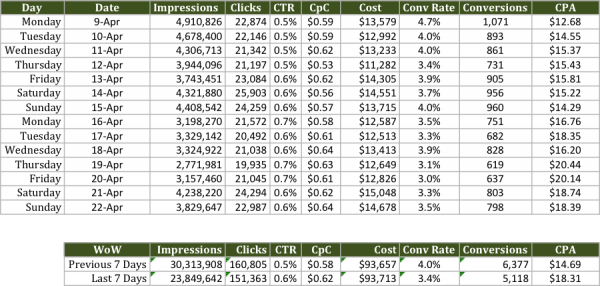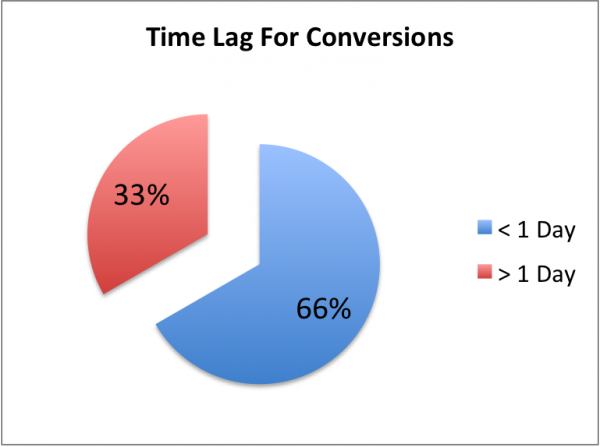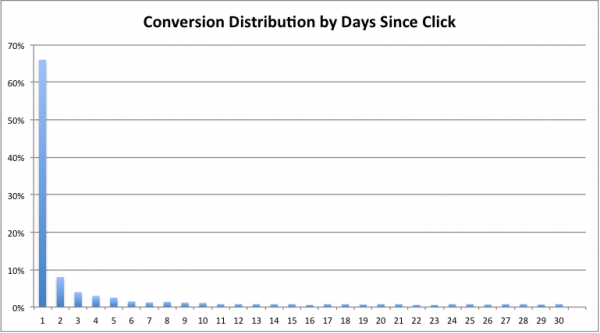Understanding Your Analytics Versus Campaign Management Tools
More and more, I have been interacting with executives using campaign management tools as their internal reporting systems. In most cases, these companies have an analytics package but prefer to use ad server data rather than analytics for internal tracking. Campaign management tools and analytics provide fundamentally different information, and while directionally similar in many […]
More and more, I have been interacting with executives using campaign management tools as their internal reporting systems. In most cases, these companies have an analytics package but prefer to use ad server data rather than analytics for internal tracking.
Campaign management tools and analytics provide fundamentally different information, and while directionally similar in many cases, choosing the wrong data source can lead to inconsistent perception of success metrics between the executive level and those tasked with execution.
Understanding the difference between analytics and ad server data may be the only way to avoid making decisions that can potentially hurt your business in the long run.
Before getting too far into this, there are two unique types of reporting systems, analytics and campaign management tools, with a fundamental difference – conversion attribution.
An analytics system leverages day of conversion attribution; that is conversions / events that happen on a given day are associated with that day regardless of when the click occurred [which led to that conversion].
On the flip side, a campaign management system uses day of click attribution – conversions / events are associated with the day the click occurred which led to a conversion regardless of when the conversion occurred.
Note: some campaign management / analytics systems offer both types of attribution. These tools are versatile but cost money.
The Differences Among Reporting Systems
Different reporting systems each have their purpose. Campaign management systems (e.g. AdWords and AdCenter) offered by ad servers to manage campaigns may be dressed up with fancy graphs and charts to look like analytics systems; but if you look beyond the bells and whistles, they are still just management systems.
With a bevvy of reporting systems available, it’s no surprise that choosing which system to trust for internal reporting is a difficult task. Why not use the ad serving tools to determine performance?
In order to answer this question, we need to evaluate pros and cons of each attribution model. There is a place for both day of click and day of conversion attribution because they each provide unique, different insights in to the performance of your marketing efforts.
Day of click attribution is useful for managing the value of a click (bid management). In order to understand the value of a click, you need to know the number of conversions / events driven by common clicks (e.g. clicks driven by a given keyword, query, or demographic target).
Moreover, in order to understand hours of the day which drive more valuable clicks (for use in processes such as day parting) you need to be able to associate the time of the click with the conversion. What time a user converts is not relevant to the value of a click because we’re only concerned with whether or not a user executed a conversion after the click.
While marketers manage their campaigns, the finance team is measuring the financial flux of the business – in other words, the flow of money in and out of the company.
When reporting on what happened in a given time frame, a business operates on an accrual basis – money spent and revenue received in a given week is associated with that week – hence day of conversion attribution is useful for reporting. The CEO / CFO needs to know how much the company made and spent for a given date range. Without day of conversion attribution, this would not be possible.
The issue with day of click attribution is that when used for reporting purposes it can lead to well intended yet short-sighted decisions. Imagine a situation where you’re analyzing recent performance (let’s define ‘recent performance’ as clicks in a live cookie window; a widely accepted cookie window is 30 days).
If you aren’t looking back over the full cookie window, then you are most likely underreporting performance: clicks made a few weeks ago may have driven conversions that occurred yesterday. In the day of click attribution model, they would be associated with two weeks ago and would not be visible in your report for yesterday.
Compensating for the ongoing historical attribution requires a complete cookie cycle view of performance data sets as the accrual of conversions occurs. For this reason, we prepare daily rolling reports (a day over day snapshot of performance) for all performance monitoring to understand trends and expected performance on a single day’s events.
The window of data analyzed should account for the vast majority of conversions as observed in the average time for click to conversion, if not the entire observed cookie window up to a reasonable period of 14 – 30 days.
To understand relative performance trends, consider the case where we observe 66% of converting events on the same day as the click and the remaining 33% of spread out over the subsequent 29 days of the cookie window.
If your goal is a $5 CPA, a one day CPA of $7.50 is acceptable ($5 / 66%) and we would expect the CPA for that one day to make it’s way down to $5 over the course of the 30 day window (when using day of click conversion attribution).
If you forced yourself to achieve a $5 CPA on one-day performance then you will end up with a 30 day CPA of $3.33 ($5 * 0.66%) meaning that you left opportunity on the table.
Or breaking it down by day:
Another major advantage in analytics systems is de-duplication across channels. Online marketing is not a single channel ecosystem but we have to attribute conversions somewhere. Furthermore, the waters get even muddier when considering display attribution rather than search because advertisers will not only get click-based conversions but also view-based conversions via display.
Analytics will attribute a conversion to the last click-based referrer and as a result, a view based conversion will never be attributed to the display channel because, by definition, the user never clicks on the ad.
In order to accurately determine the viability of view based conversions, advertisers need to match up transactions between the ad server and analytics to see if the display channel was the only paid channel to reach the user or if there were other channels involved later in the funnel.
As analysts and marketers it’s our job to manage up, educating executives on the nuances of data latency and why one system is right for determining the value of a marketing channel while another is right for monitoring performance.
It’s rare that the C-suite wants to get into the weeds of campaign management; rather they want to provide accurate target metrics for their team(s) to execute on. Education about the difference in data within analytics versus management tools will only help the C-suite better understand and set those goals with more accuracy. Proper education should make it very clear why analytics is the right tool for reporting.
Contributing authors are invited to create content for Search Engine Land and are chosen for their expertise and contribution to the search community. Our contributors work under the oversight of the editorial staff and contributions are checked for quality and relevance to our readers. The opinions they express are their own.
Related stories
New on Search Engine Land



